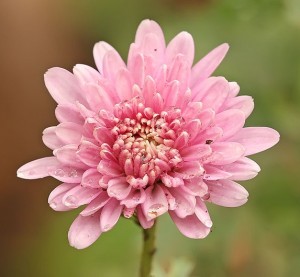
The name “chrysanthemum” is from the Greek language, chrysos (gold) and anthemon (flower). In 1999, a ruling of the International Code of Botanical Nomenclature set the defining species of the genus as Chrysanthemum indicum. The hybrid Chrysanthemum morifolium is derived primarily from this species, among others. This flower is the flower of November, and many countries regard the chrysanthemum as a beautiful reminder of autumn.
Asia has a history of using the flowers in a culinary capacity (generally, C. morifolium) for tea, rice wine and soup. The leaves are sometimes steamed or boiled as greens, and small flowers used as a garnish. C. cinerariaefolium produces pyrethrum, a natural source of insecticide. Pyrethrins attack the nervous system of insects, and they inhibit the female mosquito from biting. Because they break down easily in sunlight, they are less toxic to mammals and birds than many synthetic insecticides.
Natural pyrethrum is the basis for the group of synthetic pesticides known as Pyrethroids, which are generally used in commercial applications.




